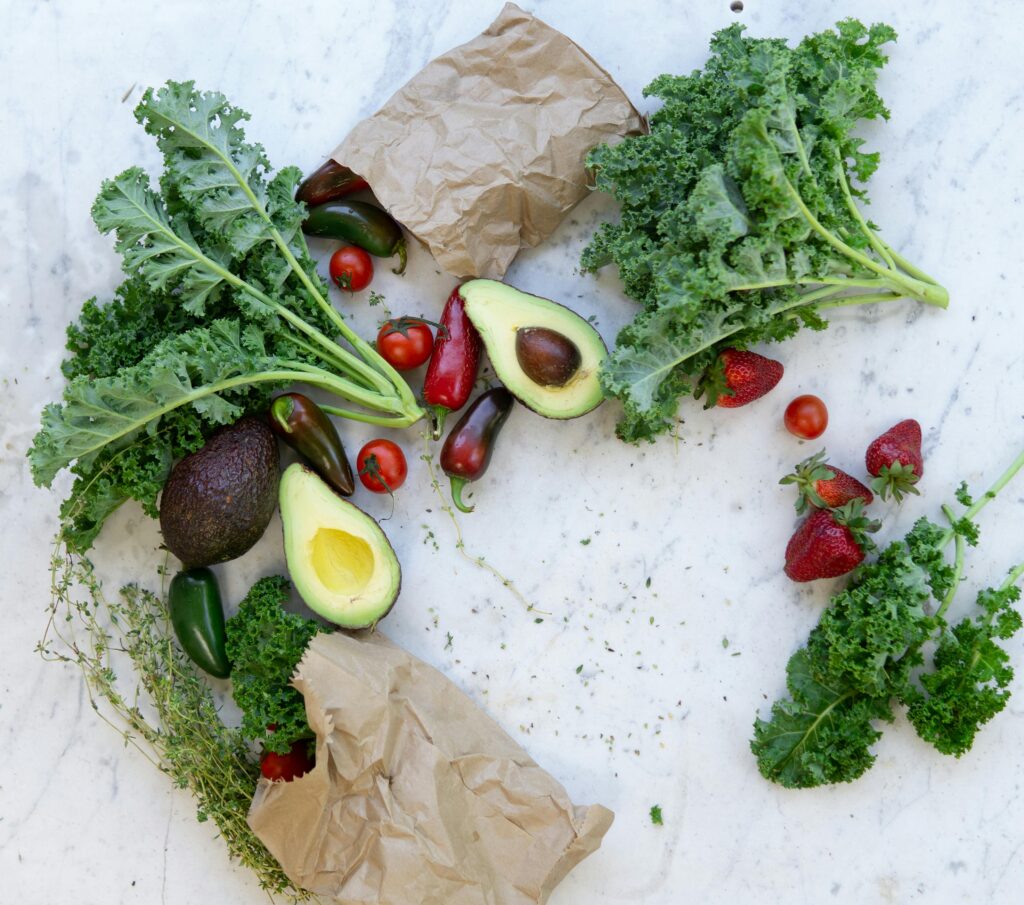Embarking on a Keto journey can feel overwhelming, especially when your schedule is packed to the brim. But fear not, because “Keto Meal Planning Made Simple: A Step-by-Step Guide For Busy Individuals” is your friendly companion in this adventure. Through regular posts brimming with weekly meal plans, nutritional advice, and practical meal prep ideas, you’ll find following a Keto diet more manageable and enjoyable, even on your busiest days. Let this guide be your beacon, illuminating the path to a healthier you without compromising your time or taste buds.

Understanding Keto Basics
Definition of the ketogenic diet
The ketogenic diet is a low-carb, high-fat diet that aims to put your body into a metabolic state called ketosis. In ketosis, your body becomes incredibly efficient at burning fat for energy. It also turns fat into ketones in the liver, which can supply energy for the brain. Ketogenic diets can cause significant reductions in blood sugar and insulin levels, alongside the increased ketones, which have numerous health benefits.
Benefits of a keto lifestyle
Embracing a keto lifestyle can lead to a variety of benefits. Many people report significant weight loss, improved energy levels, and enhanced mental clarity. It’s also been suggested that a keto diet can help manage or improve conditions like type 2 diabetes, epilepsy, and even acne. However, it’s always important to consult with your healthcare provider before making significant changes to your diet.
Macronutrient ratios for keto
On a ketogenic diet, your calories come from approximately 70% fat, 25% protein, and 5% carbohydrates. It’s important to stick closely to these ratios to keep your body in ketosis. Balancing your macronutrient intake carefully encourages your body to use fat as its main fuel source, instead of carbohydrates.
Foods to embrace and avoid
Foods to embrace on keto include fatty meats, high-fat dairy, nuts and seeds, avocados, low-carb vegetables, and healthy oils like olive and coconut oil. It’s also important to stay hydrated and keep your electrolyte levels balanced. Foods to avoid include sugary items, grains, high-carb fruits, legumes, and anything with added sugar. Reading labels becomes crucial to staying within your carb limit.
Setting Your Keto Goals
Weight loss vs. other health benefits
While many individuals start a keto diet for weight loss, others are drawn to its potential health benefits, such as lower blood sugar levels and improved mental performance. It’s important to define your own goals—whether they’re weight loss, health improvements, or both—and to monitor these parameters as you progress.
Calculating your macro needs
Your specific macro needs on keto will depend on your body composition, activity level, and goals. There are many online calculators that can help you figure out your daily needs for fats, proteins, and carbs. Remember, calculating your macros isn’t a one-time task; you’ll need to adjust them as you progress toward your goals.
Adjusting goals based on progress
If you’re not seeing the results you expected, or if your health and performance goals have changed, it’s perfectly okay to adjust your keto approach. This might mean recalculating your macros, incorporating more physical activity, or even increasing your carb intake slightly if you’re involved in high-intensity workouts.

Creating a Keto-Friendly Pantry
Essential keto ingredients
Stocking your pantry with keto staples is key. Essential ingredients include coconut and almond flour for baking, sweeteners like stevia or erythritol, high-fat canned goods like coconut cream, and plenty of spices to add flavor to your meals without adding carbs.
Budget-friendly keto shopping
It’s a myth that eating keto has to be expensive. To stay within your budget, focus on buying whole foods, opting for in-season vegetables, and purchasing meat in bulk to freeze for later use. Also, consider which high-priced keto specialty items you can live without.
Organizing your pantry for success
An organized pantry helps you keep track of your keto-friendly ingredients and makes meal prep simpler. Group items by category, and make sure your go-to ingredients are always within easy reach. This will save you time and help you stay on track.
Meal Planning Strategies
Weekly planning vs. daily planning
Some people find that planning their meals a week in advance helps them stick to their keto diet, while others prefer the flexibility of planning one day at a time. Consider your lifestyle and choose the method that works best for you. Both strategies benefit from utilizing meal planning apps and tools.
Using meal planning apps and tools
Numerous apps and online tools are designed to make keto meal planning easier. These can help you calculate macros, generate shopping lists, and even offer recipe suggestions based on the ingredients you have on hand.
Incorporating variety and balance
Eating the same meals repeatedly can lead to boredom and nutrient deficiencies. Ensure your meal plan includes a variety of foods to keep things interesting and to provide your body with all the nutrients it needs. Pay special attention to incorporating different types of low-carb vegetables and protein sources.

Fast and Easy Keto Recipes
Quick breakfast options
Start your day off right with quick keto-friendly breakfasts. Consider options like avocado toast on low-carb bread, smoothies made with coconut milk and a handful of spinach, or simple eggs and bacon.
Simple lunch ideas
For lunch, simplicity is key. Salad with a protein source like chicken or salmon, dressed in a high-fat dressing, can be both satisfying and quick to prepare. Other options include lettuce wraps or a simple platter of cheese, meats, and low-carb vegetables.
Efficient and delicious dinner meals
Dinner on the keto diet can be both delicious and efficient to prepare. One-pan dishes like stir-fries or casseroles minimize cleanup. Consider also using a slow cooker or instant pot to make meal prep even easier.
Keto snacks and desserts
Despite what you might think, snacking is possible on the keto diet. Cheese, nuts, and olives make for easy snacks. For dessert, there are many recipes for low-carb sweets made with keto-friendly sweeteners.
Batch Cooking and Meal Prepping
The basics of batch cooking
Batch cooking involves preparing large quantities of meals at once, then dividing them into individual portions to eat throughout the week. This strategy is perfect for busy individuals following a keto diet, as it helps you stay on track even when your schedule gets hectic.
Meal prepping steps for a keto diet
Successful meal prepping on a keto diet starts with selecting recipes, shopping for ingredients, and then setting aside a block of time for cooking. Consider preparing one or two types of protein, a couple of vegetable side dishes, and a keto-friendly sauce or two to mix and match throughout the week.
Storing and reheating your meals
Proper storage is key to making your prepped meals last throughout the week. Use airtight containers and refrigerate or freeze your meals as appropriate. When reheating, be mindful not to overcook, especially vegetables, to keep your meals tasting fresh.
Eating Out and Social Events
Choosing keto-friendly restaurants
When eating out, opt for restaurants with keto-friendly options. Steakhouses, seafood spots, and even salad bars can be good choices. Don’t be afraid to ask for modifications to your meal to fit your keto needs.
Navigating menus and making substitutions
Learn how to navigate menus, looking for dishes that are easy to adapt to keto. Request substitutions where necessary, such as replacing starchy sides with extra vegetables or asking for sauces and dressings to be served on the side.
Handling social gatherings and parties
At social gatherings and parties, focus on the social aspect rather than the food. You can offer to bring a dish to share that you know is keto-friendly. Don’t be shy about declining foods that don’t fit into your diet; most hosts will understand.
Tracking Your Progress and Adjustments
Using apps to track macros and calories
Tracking your intake of macros and calories can be incredibly helpful on the ketogenic diet. Many apps not only track your daily food intake but also provide insights and feedback to help you stay within your macro goals.
Adjusting your meal plan based on results
If you’re not seeing the results you want, or if you hit a plateau, it may be time to adjust your meal plan. This could involve tweaking your macros, trying different types of exercise, or incorporating intermittent fasting.
Dealing with weight loss plateaus
Weight loss plateaus are common on any diet, including keto. When they occur, reassess your current plan, looking for any areas of improvement. Sometimes, making small changes can kickstart your progress again.
Overcoming Common Keto Challenges
Managing keto flu
The keto flu is a set of symptoms that some people experience when they first start the diet. Staying hydrated and ensuring adequate salt intake can help mitigate these symptoms. It’s also important to ease into the diet slowly, gradually reducing your carb intake.
Dealing with cravings and emotional eating
Cravings and emotional eating can sabotage any diet. On keto, combat cravings by ensuring you’re eating enough fat to feel satisfied. Find non-food ways to deal with emotions, such as exercise or engaging in hobbies.
Finding motivation and support
Staying motivated on keto can sometimes be challenging. Join online communities, connect with others following a keto lifestyle, and celebrate your successes, no matter how small. Support from others can be invaluable on your keto journey.
Success Stories and Motivation
Highlighting real-life keto successes
Hearing about others who’ve successfully adopted a keto lifestyle can be incredibly motivating. Whether it’s significant weight loss, improved health markers, or enhanced physical performance, real-life success stories can inspire you to stick with or start your own keto journey.
Advice from individuals who’ve made it work
Those who’ve thrived on a keto diet often have valuable tips and insights to share, from their favorite recipes to how they navigate dining out or social events. Learning from their experiences can help you avoid common pitfalls and stay on track.
Staying motivated through ups and downs
The key to long-term success with keto, as with any diet, is consistency and resilience. Understand that there will be ups and downs, and that progress isn’t always linear. Celebrate your victories, learn from setbacks, and keep focusing on your goals. With determination and the right strategies, you can make keto a sustainable part of your lifestyle.



